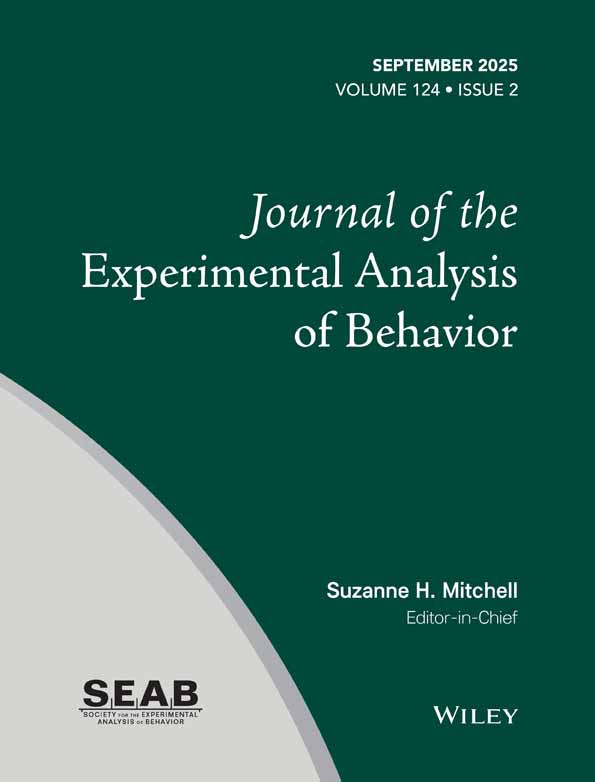VOCALIZATIONS OF WHITE CARNEAUX PIGEONS DURING EXPERIMENTS ON SCHEDULE-INDUCED AGGRESSION1
This research was supported in part by Grant GB-28224 to Florida State University from the National Science Foundation (M.E.R., principal investigator). Anita Wright was an Undergraduate Research Participant supported by National Science Foundation Grant GY-10718 while the observations reported in this paper were made. The authors thank Dr. Anthony Holbrook, Director of the Speech Research Laboratory at Florida State University, for his generous help in generating and describing the sound spectrograms, and Robert L. Collins for his comments on an earlier version of this paper.
Abstract
Two types of vocalizations of White Carneaux pigeons were identified in experiments on schedule-induced aggression and were given pictorial representation in sound spectrograms. Characteristics of these vocalizations are examined in the context of previous descriptions of vocalizations of several varieties of pigeons during aggressive and sexual encounters in naturalistic settings. These earlier descriptions portrayed vocalizations with mnemonic phrases and the symbols of dictionary pronunciation. Data are presented that indicate that the analysis of social encounters between pigeons during schedule-induced aggression may be aided by employing these and other vocalizations as dependent variables.




